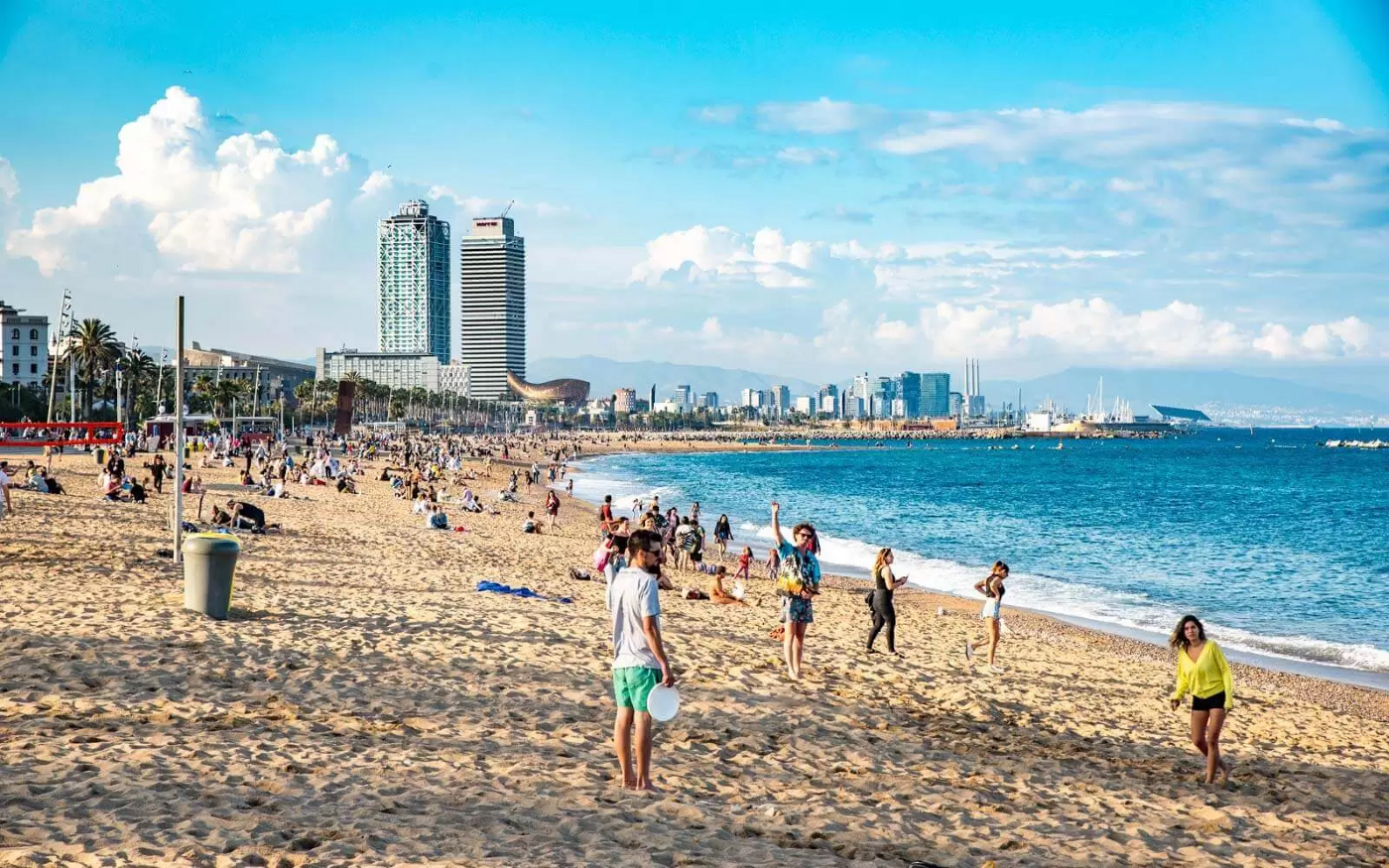A day in the life of a Glovo Engineering Manager
Team members, interview candidates, people at parties and my parents often ask — ‘What does an engineering manager (EM) at Glovo actually do?’. To answer I spent a day documenting what I’m actually doing and why I’m doing them to try to give a few more insights.
It’s a challenging and varied role — sometimes you’ll find yourself in meetings where you can impact indirectly through influencing large groups, you’ll also have focus time to contribute asynchronously. You’ll help define our engineering strategy, review technical and product docs and writing assessments, which altogether provide diversity in daily life and are both valuable and rewarding.
— — — — — — — — — — — — — — — — — — — — — — — — — — — — — — —
7:30 AM — Thursdays start early with a bowl of porridge, coffee in the moka, and going for a run along the beach. Although I go to the office several days a week today I’m working from home, which gives me a little more time to enjoy the run (note: at Glovo we value interpersonal and face-to-face communication, and we look forward to our return to office life which will be amazing).
A few emails and slacks have appeared overnight, perhaps a minor production incident to catch up on, but I don’t tend to start looking until after I’ve finished running and get ready to work.
9:24 AM — I’m answering messages and starting to plan my day. Usually I make a list of two or three things I want to accomplish and check in throughout the day. On this particular day I need to do the following:
1) finalise uncertainties around a technical plan for an upcoming project
2) ensure our procurement team is enabled to negotiate with a third party vendor
3) agree on upcoming improvements to our post mortem process.
I’ll spend any spare time on a non-blocking pull request I’m working on. I don’t get to write much code and I am not expected to (only a handful of EMs choose to do so), but every now and then I like to understand day-to-day engineering pain points.
Let the games begin!
9:45 AM — I’ve answered all the emails I want to answer, planned everything I wanted to plan — I now decide to bravely pull the master branch of the repo I’m working on, and manage to quickly write one unit test. It isn’t passing, so I’ll have to look into this later. Great. Out of time.
10:00 AM — Daily stand-up — we have a rotating facilitator and I’m really pleased with how this week’s facilitator is doing. As an EM in stand up you generally need to be extremely attentive — on the lookout for confusion, uncertainty, or people saying exactly the same thing as the previous day. These can highlight things slowing the team down, which you may need to refocus yourself to solve. The team seems pretty clear on the plan today though so we finish quickly.
The product manager and I had our quarterly review from the team few days earlier and one of the things that came up in the feedback from the team is that they don’t feel too involved in understanding the impact of their work. So we use the last few minutes of stand up for presenting the shiny new data analysis of a recent project.
10:28 AM — Stand up is finished, I join my next meeting two minutes early and sip my coffee — it’s about goal number 3, figuring out a plan and ownership for improving post mortems. I have some ideas, and I’d love to drive this, but I don’t have the bandwidth. Fortunately, we have an impressive new staff engineer who seems like a great fit. The meeting goes well — there is a plan to move things forward! Item 3) done. I feel empowered as an EM to fix problems when I spot them or focus time on areas where I think we can improve as an organisation.
11:01 AM — No gap between meetings. The next one is a sync with our data team. This helps us make sure we will have the ability to understand the impact of all our features when we release them. Our team produces a lot of vital business data around courier earnings, so it is important to get things right. Fortunately, there are only a couple of ambiguities that we quickly clear up.
11:18 AM — In a few minutes, I scramble to make my unit test pass (I identify a typo in the code). It passes. Job done. I quickly make screenshots, write a description and open a PR. I’m two minutes late for the next meeting.
11:32 AM — EMs need to think about how to replace themself, growing the next generation of leaders and engineering managers. As part of that, I mentor a number of people on the path to become EMs. We end up talking about what the right and wrong motivations are to be an engineering manager. I get so absorbed in the discussion I forget to take notes. I hate forgetting to take notes.
12:00 PM — This is the first of the day’s two meetings to discuss item 1 — our upcoming project. The engineer leading the project has done a great job producing a really good, clear architectural overview which we discuss together. We debate around the order in which we will attack the project, and the data models. I’m super confident we’re going to smash this project out of the park. As a team, we are autonomous in how we define our solutions. The only requirement is we expose a design doc for relevant stakeholders to engage with.
12:27 PM — I’m getting messages on slack. People have approved my pull request from earlier! Life is beautiful!
12:30 PM — A 6-weekly OKR review meeting. Our PM presents progress on meeting our quarterly commitments. As an EM, it is important to clarify any technical uncertainties, and speak to any technical tailwinds or headwinds over the previous weeks. At Glovo, we focus heavily on outcomes, so we discuss a feature we’ve recently released and the impact on reducing customer delivering times. Stakeholders are happy!
13:00 PM — Lunch time! It’s almost always have a full hour lunch break, leaving the house, even if I make lunch myself or order on Glovo. I leave my phone at home, and spend at least 45 of the 60 minutes relaxing, chatting and not thinking about work.

14:00 PM — I’ve had my post-lunch coffee and now I have a working group discussing the future of technical planning in Glovo. EMs at Glovo are encouraged to contribute to business-wide process improvements. We’ve noticed that sometimes our design docs become overly bureaucratic, which can impede quality, efficient delivery.
We look at Wardley maps for understanding the structure of our technical plans, presented by a staff engineer, and get to the point where we decide we need to unbundle the use cases for design documents to evolve them in different directions for the different use cases.
14:58 PM — I’m merging my PR. However many thousand PRs I’ve merged in my career, I still get that little buzz inside when I click the button. This puts me in a really good mood for…
15:00 PM — An interview. We’re growing rapidly, and I frequently do ‘cultural fit interviews’. What we’re looking for is ‘culture add’ — essentially, asking what can a candidate add to our culture to help it strengthen and grow towards what we want it to be — one of diversity, care, impact, joy, humility, and accountability.
I like this candidate — I think they’d add to any team. It’s definitely a yes from me and I learn a few things as well.
16:00 PM — A quarterly review with one of my team members. We believe in continuous feedback revolving based on weekly 1–1s with all team members, but I also like to have more structured, professional development reviews every three months. My team is very good, so I really try to focus on how they can go from good to great. This is really tough for me, I spend a long time asking myself questions like — ‘Where does this person get stuck?’, ‘If they’re a 7 out of 10, what would an 8 out of 10 look like to me?’ — I aim to come up with 3 to 5 things to improve on. It goes well
16:47 PM — I review our negotiations with the third party vendor mentioned as part of objective 2. I pass on some notes to procurement about how I see our partnership evolving and a vendor comparison. The Procurement team is happy! There’s a lot of trust in me and the individual contributors I’m working with to select the right tool and make sure we spend Glovo’s money wisely. So objective 2 is ticked off and I go back to slack
16:58 PM — Another EM messages asking for a chat. We jump on a call.
17:00 PM — It’s late in the day — we spend the first ten minutes talking about our lives and families — we have a really good community environment amongst EMs so it isn’t common for us to get sidetracked talking about life before we get to the core of the issue. I’m off on holiday soon and I had asked this EM to help out whilst I was away.
17:27 PM — Panic!!!! One of the team’s alerts has fired. As an EM, you always want to stay on top of your team’s alarms — you may be needed to jump in to help with incident comms and allow the team to focus on fixing the issue, or help the team make a decision about the best response. This time it is a false alarm — all it means is that the alarm needs better tuning. However, this means we’re all a bit late for the next meeting.

17:42 PM — The second meeting on item 1) — our upcoming project. Some uncertainties have been clarified, documents have been developed and we have a clear action plan for the next couple of weeks. Now we start to talk about exactly how many people and who will be working on the project, and roughly what the expectations are around delivery. The team drives this — it isn’t my place to tell them how long it will take to build something new. I probe with a few questions, and primarily note a few takeaways for anything additional we may need to deliver successfully. Nonetheless, 1) is done — the three things I wanted to achieve have been ticked off.
18:00 PM — The final meeting of the day. A loop meeting, where we discuss the candidate I interviewed earlier in the day amongst all the interviewers. The EM also acts as the hiring manager in these meetings, so it is vital to be attentive to all comments, try to spot positive or negative patterns across interviews, and challenge the decisions of colleagues where necessary. In this case, it is easy — everyone really likes the candidate and within 20 minutes we’ve agreed we’re going to make an offer. Great! One more engineer in the team, only a few hundred more to hire in 2021.
18:22 PM — The day is over. I spend 10 minutes cleaning up messages and emails, briefly evaluating the day — I achieved everything I wanted. By 18:30, the laptop is closed and there’s still plenty of time to enjoy the evening Barcelona sun, grab some takeaway food, and enjoy the evening sun in Plaça del Sol… Life is challenging, but life is good!
— — — — — — — — — — — — — — — — — — — — — — — — — — — — — — —
In my year at Glovo, I’ve found that very few days as an Engineering Manager here are the same, and they very often turn out differently from what you expect at the start of the day. Whatever happens, you can be sure that you’ll learn something new, have fun and get to make a difference!
